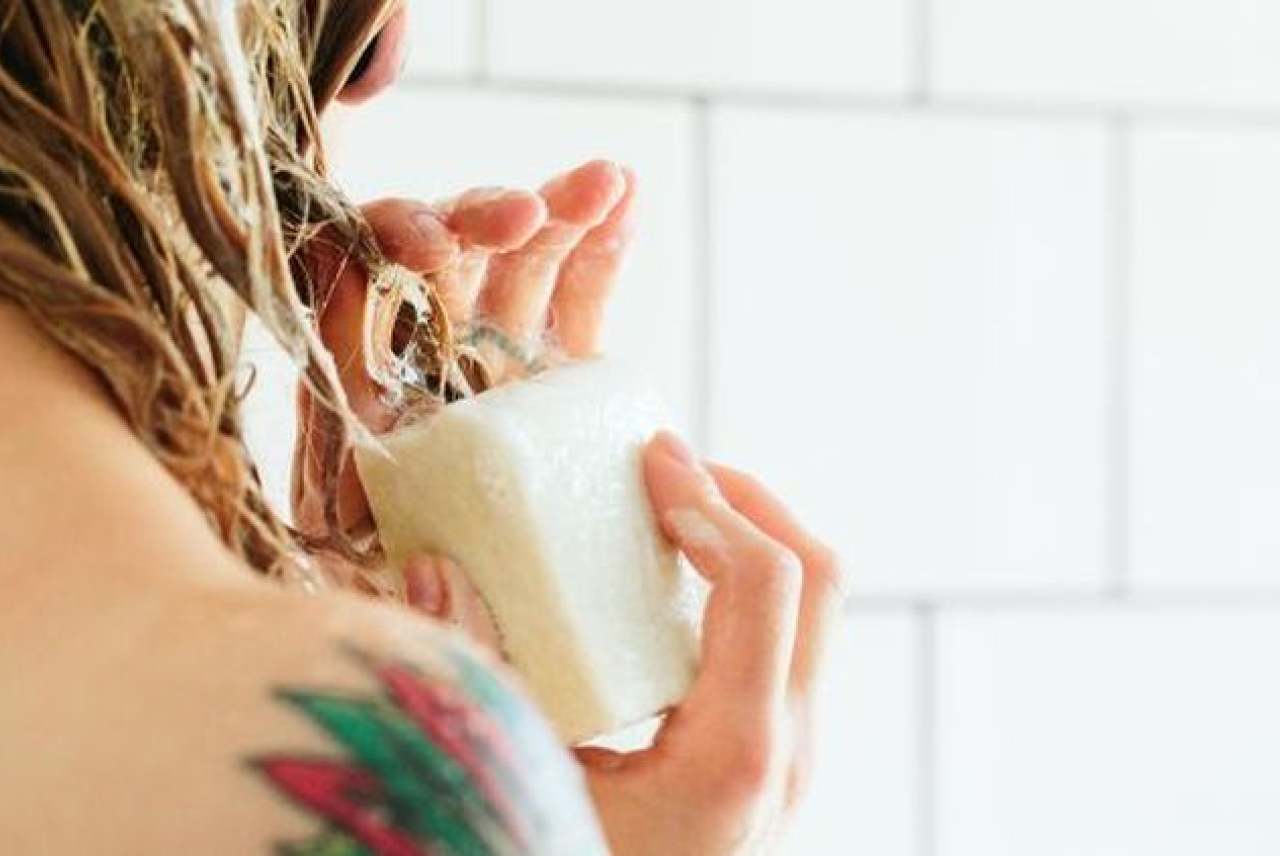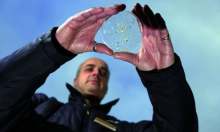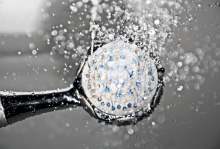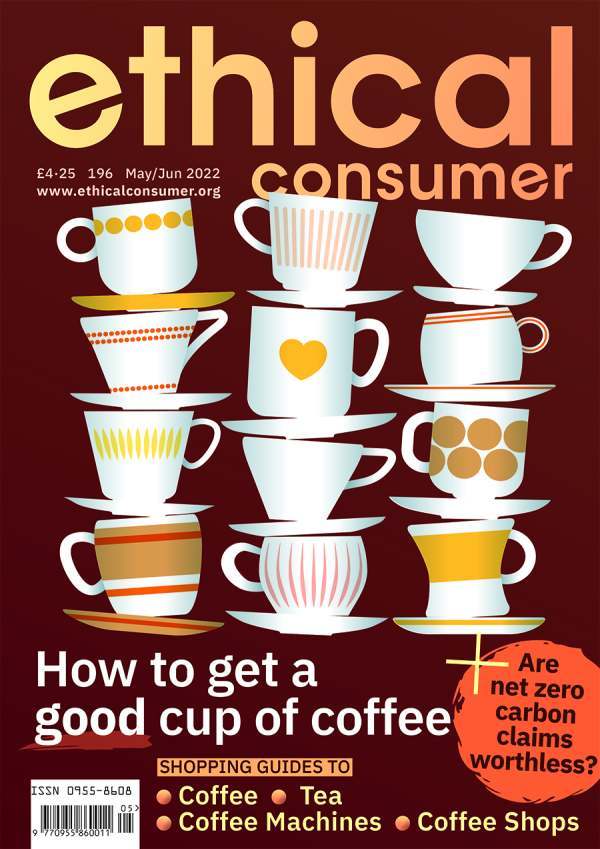There are thousands of ingredients used in personal care products, many of them have negative environmental impacts and health effects ranging from skin irritation to carcinogenicity.
Toxic chemicals in cosmetics and beauty products

We look at some of the toxic ingredients found in cosmetics and toiletries, and how to avoid them.
Parabens
Parabens are a group of compounds widely used as antifungal agents, preservatives and antimicrobials in cosmetics and toiletries. Parabens are linked to hormone disruption, reproductive toxicity, immunotoxicity, neurotoxicity and skin irritation.
The EU has banned five parabens from cosmetics but not the most common ones used in cosmetic products – methylparaben, propylparaben, and butylparaben. However, it has restricted the amounts of these that can be used in products.
Unfortunately, you can’t just look for the word ‘paraben’ on the ingredients list. Your best bet is checking for the three most common options listed above or choosing a product that is marketed as ‘paraben free’.
Our guides list companies that get a best in our toxics rating, and are therefore paraben free, or have committed to phasing parabens out.
Triclosan
Triclosan and triclocarban can be used as an antimicrobial in soaps. Its use in toothpaste, mouthwash, deodorants, cosmetics and hand soaps is restricted by the EU whilst the US banned its use in liquid soaps and bars of soap in 2016.
Due to public pressure, most companies have been quietly reformulating their products. In our soap guide, Dettol hand soap was the only product we found that contained triclocarban.
Triclosan, which is classified as a pesticide, can affect the body’s hormone systems – especially thyroid hormones, which regulate metabolism – and may disrupt normal breast development.
The EU classifies triclosan as irritating to the skin and eyes, and as very toxic to aquatic organisms, noting that it may cause long-term adverse effects in the aquatic environment. Widespread use of triclosan may also contribute to bacterial resistance to antimicrobial agents.
Phthalates
Phthalates are a group of hormone-disrupting chemicals that are most commonly used to make PVC soft and flexible but are also used as a solvent to dissolve certain ingredients, in cosmetics and to make the smell linger longer in synthetic fragrances. Fragrances are in everything from shampoo to deodorant and laundry detergent.
Phthalate exposure has been linked to early puberty in girls, a risk factor for later-life breast cancer.
Several phthalates have been banned in the EU but not all, including diethyl phthalate (DEP). Because the chemical constituents of ‘fragrance’ or ‘parfum’ do not have to be listed on labels, one way to avoid phthalates altogether is to go for fragrance-free products or those free of synthetic fragrances.
SLS and SLES
Two of the most widely used detergents and foaming agents in shampoos and liquid soap products are sodium lauryl sulphate (SLS) and sodium laureth sulphate (SLES). You’ll often find greener products being marketed as SLS-free.
Healthline says that SLS and SLES can be an irritant to people’s eyes, skin, mouth and lungs, if in high concentrations and left on for longer periods of time. Cosmetic products tend to have lower concentrations than for example cleaning products, according to the site.
Skin Deep – a guide to toxic chemicals in cosmetic products, run by research and education organisation the Environmental Working Group – rates SLES as low risk, and SLS as slightly higher risk if used around the eyes.
Synthetic fragrances
Synthetic fragrances are commonly used in personal care products and often contain as many as 200 ingredients. These ingredients are considered to be trade secrets, so companies don’t have to tell us what they are. However, studies suggest a number of possible negative effects of the compounds used to create them including:
- A cause and trigger of asthma attacks.
- Hormone disruption, which can affect development and fertility.
- Increase in the proliferation oestrogen-responsive breast cancer cells.
- Skin, eye, nose and throat irritation.
- They have also been found to be toxic to aquatic life and can accumulate in the food chain.
Use Ethical Consumer’s guides to find cosmetic toxic-free brands
All Ethical Consumer guides rate companies on their approach to toxic chemicals, and list toxic-free alternatives.
Parabens, phthalates and triclosan have been selected by Ethical Consumer as important indicators for our toxics rating. We check all companies likely to be using these chemicals to see whether they had policies on their use. Their ratings appear in the Pollution & Toxics column on our score tables:
| Best rating |
No use of the three chemicals, or clear, dated targets for ending their use. |
|---|---|
| Middle rating |
Some policy on the three, or policy on one or two of them. |
| Worst rating |
No policy/commitment to phase them out. We have highlighted in each guide what the brands scored. |
Check out Ethical Consumer’s guides to cosmetic products
We have various shopping guides to health and cosmetic products which will help you find out which brands don't used these chemicals, and which brands to avoid. Links to the guides are below.
We also have a quick guide to some ethical labels for organic and natural cosmetic and skin products, so you know what to look for.
Reducing your risk
- Use less: use fewer products, less often.
- Check ingredients lists before you buy them.
- Or you could make your own.
- Buy from companies you trust. These could include brands that get our best rating for toxic chemical policies. Find out which brands performed best and which scored worst in our guides to soap, shampoo, shower gel and sunscreen.
Case Study: L’Oreal rating on toxic chemical products
On 14th March 2022, Ethical Consumer searched the L'Oréal corporate website for the company's policy on the use of the hazardous chemicals parabens, triclosan and phthalates. Some forms or uses of these chemicals were banned or restricted in the EU or the USA.
Triclosan is an antibacterial and a suspected endocrine disruptor. Parabens are also endocrine disruptors and have been linked to breast cancer. They are used as preservatives. Phthalates, usually DEP or DBP, are used in fragrances and are endocrine disruptors.
A strong policy on toxics would be no use of these chemicals or clear, dated targets for ending their use.
The 'Inside our products' section of L'Oréal's website included pages on parabens. It was stated therein that the company used some parabens in its products. No mention of phthaltes was found on the 'Inside our products' webpage and the "Cosmetify" website listed L'Oreal as a phthalate free beauty brand. The 'Inside our products' webpage stated that L'oreal did not use triclosan in any of its products.
As two of the three chemicals were not used, L'Oréal received Ethical Consumer's middle rating for its pollution and toxics policy.
Subscribe to Ethical Consumer
All the information and inspiration you need to join thousands of others and revolutionise the way you shop, save and live. Full online access to our unique shopping guides, ethical rankings and company profiles. The essential ethical print magazine.

- 6 issues of Ethical Consumer Magazine in print and/or digital format
- 12 months full access to all Shopping Guides and Company Profiles
- Special discount offers from selected Best Buy companies.
- Digital versions of our entire catalogue of back issues.






